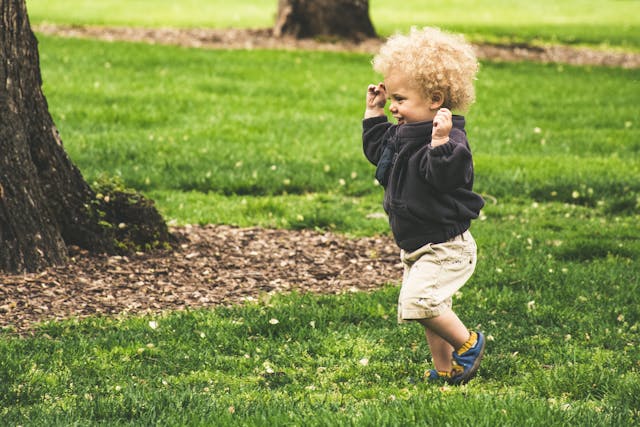
Potty training is an important developmental milestone for both children and parents. Knowing when a youngster is ready to start this process can make a big impact and help to smooth out and increase success for all those engaged. Understanding the signals of preparedness lays a strong basis and helps the kid to move naturally instead of struggling. These four key indicators can help you spot a youngster who could be ready to start the potty-training road.
Physical Awareness and Control Over Bladder and Bowel Movements
Development of bodily awareness and control over their urine and bowel motions is one of the first indicators a kid could be ready for toilet training. Usually, for at least two hours or more, this often shows the capacity to remain dry for long stretches. This is a strong sign that their bladder muscles have strengthened, enabling longer lengths of pee retention. Children can also start to have more consistent bowel motions, which indicates they are learning control over this ability. When a youngster has a wet or dirty diaper, some can even show symptoms of pain, indicating knowledge of their body. Successful toilet training depends on these shifts in physical control and awareness as they show that kids are not only aware of their physical requirements but also starting to understand the pain of a dirty diaper, which motivates them to search for a more comfortable option.
Interest in Imitation and Curiosity About Bathroom Habits
When a youngster begins to demonstrate an interest in copying, particularly in relation to adult toilet practices, this also points to potty-training readiness. For toddlers, seeing parents or older siblings can be intriguing as it helps them to comprehend activities they might not quite grasp but are anxious to do. A kid is beginning to make connections if they start following people to the bathroom, questioning about using the toilet or copying flushing behavior. They can greatly inspire children’s desire to follow bathroom habits. Hence, the concept of potty training becomes less scary and more interesting. Encouragement of this curiosity helps one to get excited about using the potty, therefore transforming the experience from a duty to an interesting one.
Ability to Communicate Needs and Understand Simple Instructions
Communication skills are crucial in establishing if a youngster is ready for toilet training. A youngster who can either vocally or non-verbally communicate their needs that is, speak pee or poo or display motions indicating they need to go is probably ready to start toilet training. A seamless transition also depends on knowing and following basic commands like sit on the potty or pull down your pants. A major step toward independence in this regard is children’s ability to communicate pain when they have to use the bathroom. A youngster could start tugging at their diaper, obviously displaying their discomfort, or they might start utilizing words or noises to tell an adult when they need a diaper change. A youngster is quite likely to be developmentally ready for this stage if they regularly show they can understand and respond to potty-related instructions. At this time, consulting a professional like a potty training consultant can also be helpful as it gives parents tailored techniques to help their child’s communication and learning.
Signs of Independence and Desire for Self-Sufficiency
Developing independence is frequently one of the last indicators that a child is ready to start toilet training. Youngsters who show a drive for self-sufficiency and confidence in their abilities might be emotionally ready for toilet training. Small indicators of this can be insisting on dressing yourself, trying to feed yourself, or wanting to complete other chores without adult assistance. Children who express pride in these autonomous activities usually indicate they are ready to handle the potty-related tasks. When a youngster feels the need to go, they can also start to withdraw to a secluded space, suggesting an understanding of the necessity of seclusion. Potty training lets the youngster focus their demand for autonomy on the procedure and helps them to feel responsible. A difficult step toward self-reliance, potty training can be satisfying for youngsters who are growing in their sense of freedom to go past diapers.
Conclusion
When a kid is ready to start toilet training, it is important to pay attention to their developmental, emotional, and physical indications. Parents can determine whether their child has reached a point where they can manage the duty and find gratification from this new ability by seeing these indicators. While waiting for obvious readiness indicators lets the kid approach the process with confidence and pleasure, trying toilet training too early could cause needless anxiety. Every child will have a different path to toilet training.


